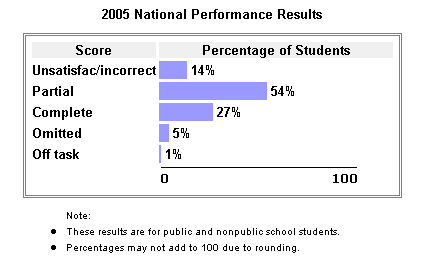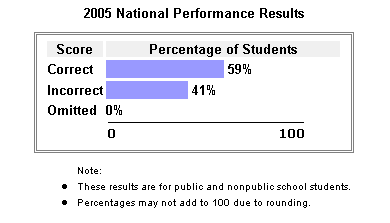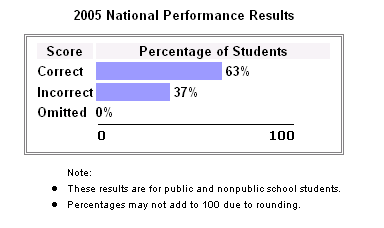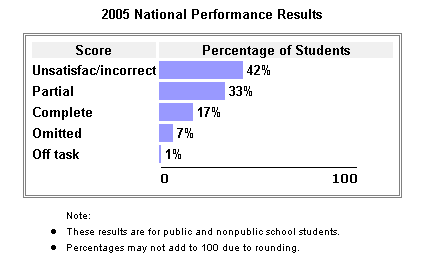Test Yourself Sample Questions: Science Grade 8
INSTRUCTIONS: Find out the correct answers to the questions by looking at the key for the multiple-choice questions or the scoring guide for constructed-response questions. See how your response compares to the actual national response data from the assessment.
Question 1: There are many different kinds of human-made satellites orbiting the Earth. List three things that these satellites are used for.
You responded:
Complete
Student lists three ways that satellites are used.
Partial
Student lists one or two ways that satellites are used.
Unsatisfactory/Incorrect
Student does not list any correct ways satellites are used.

View the item map to see how this item, which is mapped at scale score 111, relates to the other items on the NAEP scale and to the NAEP achievement levels.
Question 2: Each figure below shows a force measured in newtons pushing on a block. If there are no other forces pushing on the block, in which case is the acceleration of the block greatest?
Correct answer: C You responded:

View the item map to see how this item, which is mapped at scale score 169, relates to the other items on the NAEP scale and to the NAEP achievement levels.
Question 3: Julio wanted to know how his pulse rate changed when he ran very fast. He measured his pulse rate before he started running, while he was running, and two minutes after he stopped running. Which graph best shows how Julio's pulse rate changed?
Correct answer: D You responded:

View the item map to see how this item, which is mapped at scale score 166, relates to the other items on the NAEP scale and to the NAEP achievement levels.
Question 4: On steep slopes along the sides of new roads, highway department workers often grow plants to prevent the soil from being eroded. Describe two ways that these plants keep the soil from eroding.
You responded:
Complete
Student response includes two ways plants prevent erosion.
Partial
Student response includes one way that plants prevent erosion.
Unsatisfactory/Incorrect
Student response does not demonstrate an understanding of how plants prevent erosion.

View the item map to see how this item, which is mapped at scale score 218, relates to the other items on the NAEP scale and to the NAEP achievement levels.